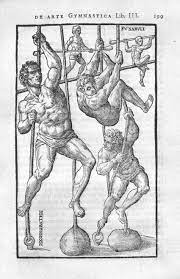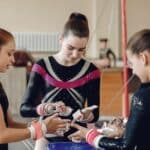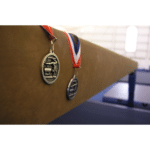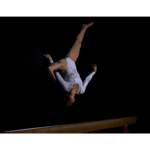Gymnastics is a sport that has been around for centuries and has evolved significantly throughout history. From its origins in ancient Greece to the modern-day Olympic Games, the evolution of gymnastics has witnessed many changes, both in terms of technique, purpose and equipment.
In this article, we will take a look at the history and evolution of gymnastics, tracing its roots back to ancient Greece and exploring how it has developed into the sport we know today.
Table of Contents
- Introduction
- Ancient Greek Gymnastics
- Gymnastics in the Middle Ages
- The Renaissance and Gymnastics
- Gymnastics in the 19th Century
- The Birth of Modern Gymnastics
- Gymnastics in the Olympic Games
- Women in Gymnastics
- Artistic Gymnastics v Rhythmic Gymnastics
- Gymnastics Today
- The Future of Gymnastics
- Conclusion
Introduction
While modern gymnastics is a popular sport that is practiced and watched all over the world, its origins can be traced back to ancient Greece, through the Middle Ages, and the Renaissance period before being transformed into the sport we are familiar with today.
Ancient Greek Gymnastics
In ancient Greece, the role of gymnastics was multifaceted and deeply entrenched in the societal fabric. Recognized not just as a physical activity, gymnastics was an integral part of the educational curriculum, emphasizing the development of both the body and the mind. The concept of “kalos kagathos,” which translates to “beautiful and good,” was a fundamental ideal in Greek culture. This ideal stressed the importance of achieving excellence in both physical prowess and intellectual capability, and gymnastics was viewed as a primary means to attain it.
The ancient Greeks held the belief that for an individual to lead a fulfilling life, harmony between the mind and the body was imperative. Gymnastics, in this context, was not just about physical exercise; it was a discipline that nurtured mental fortitude, resilience, and a sense of purpose. This holistic approach was deeply rooted in the Greek philosophical tradition, where esteemed philosophers like Plato and Aristotle underscored the value of physical fitness as a conduit to intellectual and moral virtue.

The practical application of gymnastics also had militaristic implications. In an age where physical combat was a norm, preparing young men for the rigors of warfare was essential. Gymnastics, with its emphasis on strength, agility, and endurance, was an ideal training regimen for soldiers. Activities such as running and jumping honed their agility and speed while throwing exercises improved their precision and strength, vital skills on the battlefield.
Ancient Greek Calisthenics
The ancient Greeks practiced a specialized form of gymnastics known as “calisthenics.” Unlike modern gymnastics, which often involves apparatus like beams and bars, calisthenics focuses on body-weight exercises. These routines were meticulously designed to enhance strength, endurance, and flexibility. Participants would engage in a series of activities ranging from basic movements like push-ups and squats to more complex exercises like handstands and plyometric jumps.
Additionally, the gymnasia, or training grounds, were also venues for combat sports such as wrestling and boxing. These sports were more than just competitions; they were rites of passage, testing the mettle of young men and preparing them for the challenges of adulthood. Wrestling, in particular, was a revered sport, emphasizing technique, strategy, and physical strength. Boxing, on the other hand, was a test of endurance and resilience, with participants often enduring grueling matches.
Gymnastics in the Middle Ages
Following the decline of the Roman Empire, a significant portion of the cultural and intellectual advancements from the classical era, including the practice of gymnastics, faced a period of dormancy in Europe. The subsequent era, commonly referred to as the Dark Ages, was marked by socio-political upheavals, economic stagnation, and a general shift away from the urban-centric civilizations of antiquity. As a result, many of the structured physical activities and athletic traditions from the Greco-Roman period faded into obscurity.
However, the Middle Ages, spanning roughly from the 5th to the late 15th century, witnessed a gradual resurgence of interest in physical education, albeit with a different focus and intent. Gymnastic activities, rather than being pursued for holistic well-being or competitive spirit as they were in ancient Greece, became more utilitarian in nature.

The medieval period was characterized by feudalism, a socio-economic system where land was the primary source of power and wealth. Lords and knights, the military elite of this system, required specific physical skills to maintain their status and protect their territories. Consequently, gymnastics and physical training started evolving to cater to these martial needs.
Archery, for instance, emerged as a paramount skill during this period. Beyond its obvious military applications in battles and sieges, archery became a popular pastime among the nobility. The longbow, in particular, was a weapon that required immense strength and precision, and mastering it necessitated rigorous training. Regular archery drills not only honed accuracy but also developed the archer’s upper body strength and concentration.
Similarly, horsemanship, or the art of riding and handling a horse, became an essential skill for knights and warriors. The medieval battlefield was dominated by cavalry units, making proficient riding a matter of life and death. Gymnastic exercises tailored for riders emerged, focusing on enhancing balance, core strength, and coordination. Jousting tournaments, which combined horsemanship with combat skills, also gained prominence as both a sport and a training method.
However, it’s worth noting that while these activities had gymnastic elements, they were distinct from the gymnastics of ancient civilizations. The emphasis during the Middle Ages was more on practical application in warfare than on the philosophical ideals of physical and mental harmony.
By the time the Renaissance period dawned in the late Middle Ages, there was a renewed interest in the classical knowledge of the Greeks and Romans. This revival paved the way for the modern understanding and practice of gymnastics, which would further evolve in the centuries to come.
The Renaissance and Gymnastics
The Renaissance, spanning roughly from the 14th to the 17th century, was a period of profound cultural and intellectual rebirth in Europe. Drawing inspiration from the classical civilizations of Greece and Rome, thinkers, artists, and scholars of the Renaissance sought to bridge the gap between antiquity and their contemporary world. Among the many fields that experienced a resurgence during this era, physical education and gymnastics occupied a significant place.
Central to this revival was the Italian humanist Girolamo Mercuriale. Born in Forlì in 1530, Mercuriale was not only an accomplished physician but also an avid scholar of classical texts. His deep appreciation for ancient civilizations led him to recognize the pivotal role gymnastics played in the holistic development of individuals in those times.
De Arte Gymnastica
In 1569, Mercuriale penned “De Arte Gymnastica,” a seminal work that can be considered one of the earliest comprehensive treatises on physical education. Drawing extensively from ancient sources, Mercuriale meticulously detailed the various exercises practiced by the Greeks and Romans. His objective was not merely to catalog these exercises but to underscore their relevance in the Renaissance context.

“De Arte Gymnastica” delved into a wide spectrum of physical activities, ranging from basic calisthenics to more specialized exercises. Mercuriale elaborated on the techniques, benefits, and appropriate contexts for each activity. For instance, he discussed exercises that enhanced flexibility, strength, and cardiovascular endurance, highlighting their significance in ensuring a robust physique and overall well-being.
Beyond the mere physical aspect, Mercuriale’s treatise also touched upon the philosophical underpinnings of gymnastics. Echoing the Greek notion of a harmonious balance between the mind and body, he argued that physical exercise was not just a means to achieve a healthy body but also a pathway to mental clarity and intellectual vigor. In essence, Mercuriale posited that the discipline of gymnastics was instrumental in cultivating the Renaissance ideal of the “universal man” – an individual who excelled in both physical and intellectual pursuits.
Moreover, “De Arte Gymnastica” was instrumental in advocating for the integration of gymnastics into educational curricula. Mercuriale believed that just as students were taught literature, mathematics, and sciences, they should also be instructed in physical education to ensure a well-rounded education.
Gymnastics in the 19th Century
In the 19th century, gymnastics began to develop as a sport in its own right. Friedrich Ludwig Jahn, a German physical educator, is credited with founding the first modern gymnastics club in 1811. Jahn believed that gymnastics was an essential part of physical education and emphasized the importance of developing both the mind and body.
The Birth of Modern Gymnastics
The modern form of gymnastics that we know today began to take shape in the late 19th century. Gymnastics was introduced as an Olympic sport at the first modern Olympic Games in Athens in 1896. However, the sport was very different from what we see today. The events included in the first Olympic gymnastics competition were rope climbing, parallel bars, horizontal bar, and vault.

Gymnastics was often performed outside during the early days of modern gymnastics including many early Olympic games.
Apparatus was still very basic until the second half of the 20th century when developments started to include sprung floors and
Gymnastics in the Olympic Games
Since its introduction to the Olympic Games, gymnastics has continued to evolve and grow in popularity. Today, there are two main types of gymnastics: artistic gymnastics and rhythmic gymnastics. Artistic gymnastics includes events such as the vault, uneven bars, balance beam, and floor exercise, while rhythmic gymnastics focuses on the use of various apparatus such as ribbons, balls, and hoops.
In recent years, there has been a push to make gymnastics more accessible and inclusive. This has led to the introduction of new events, such as parkour and freestyle gymnastics, which aim to make the sport more appealing to a wider audience.
Women in Gymnastics
Gymnastics has traditionally been dominated by women, with female gymnasts often taking the spotlight at major competitions such as the Olympic Games. However, it was not until 1928 that women were allowed to compete in gymnastics at the Olympic level.
Since then, women’s gymnastics has continued to grow in popularity, with many young girls being inspired by the likes of Simone Biles and Gabby Douglas. However, there have also been concerns about the pressure placed on young female gymnasts to perform at a high level and the toll that this can take on their mental and physical health.
Artistic Gymnastics v Rhythmic Gymnastics
Artistic gymnastics and rhythmic gymnastics are two distinct disciplines within the sport of gymnastics. Artistic gymnastics focuses on strength and power, with athletes performing a series of complex acrobatic moves on various apparatus. Rhythmic gymnastics, on the other hand, focuses on grace and flexibility, with athletes performing choreographed routines using various hand-held apparatus.
Both types of gymnastics require immense skill and dedication, and athletes in both disciplines often start training at a very young age.
Male artistic gymnasts compete on six types of apparatus: Floor, Vault, High Bar, Parallel Bars, Pommel Horse and Rings.
Female artistic gymnasts also compete on the floor and vault but use the beam and uneven bars to make up four types of apparatus at competitions.
Rhythmic gymnastics is only competed by female gymnasts (though there is a growing interest for male rhythmic events).
Gymnastics Today
Today, gymnastics is a popular sport that is practiced and watched all over the world. From the Olympics to local competitions, gymnastics continues to captivate audiences with its mix of strength, grace, and athleticism.
However, the sport is not without its controversies. In recent years, there have been concerns about the safety of some gymnastics equipment, as well as allegations of abuse within the sport.
There is a wide range of disciplines in gymnastics which shows how the sport has diversified in recent years. As well as the popular Artistic and Rhythmic there is Power Tumbling, Trampoline, Acrobatics and Aerobics.
The Future of Gymnastics
As gymnastics continues to evolve, it is likely that we will see new events and disciplines emerge. There may also be a greater emphasis on making the sport more inclusive and accessible to a wider range of athletes.
Additionally, there will likely be a continued focus on athlete safety and well-being, with measures being taken to address some of the concerns that have been raised in recent years.
Conclusion
The evolution of gymnastics is both fascinating and inspiring. From its origins in ancient Greece to the modern-day Olympics, gymnastics has continued to captivate audiences with its mix of strength, grace, and athleticism.
As the sport continues to evolve, it is likely that we will see new events and disciplines emerge. However, it is important to ensure that the sport remains safe and inclusive, with a focus on the well-being of its athletes.
- A Complete Guide to Gymnastics Rips
 Are you tired of dealing with painful gymnastics rips on your hands from training? Look no further – this article offers a comprehensive approach… Read more: A Complete Guide to Gymnastics Rips
Are you tired of dealing with painful gymnastics rips on your hands from training? Look no further – this article offers a comprehensive approach… Read more: A Complete Guide to Gymnastics Rips - How is Gymnastics Scored? (answered)
 In the world of gymnastics, every flip, spin, and leap is a blend of athleticism, precision, and artistry. But how is gymnastics scored accurately… Read more: How is Gymnastics Scored? (answered)
In the world of gymnastics, every flip, spin, and leap is a blend of athleticism, precision, and artistry. But how is gymnastics scored accurately… Read more: How is Gymnastics Scored? (answered) - Level 5 Gymnastics Skills (Guide)
 This guide delves deep into the Level 5 gymnastics skills, providing insights, breakdowns, and an expert perspective on each skill and its significance in… Read more: Level 5 Gymnastics Skills (Guide)
This guide delves deep into the Level 5 gymnastics skills, providing insights, breakdowns, and an expert perspective on each skill and its significance in… Read more: Level 5 Gymnastics Skills (Guide) - Level 4 Gymnastics Skills (Guide)
 In this comprehensive guide, we’ll delve into the details of the Level 4 gymnastics skills, breaking down each requirement for a clear understanding. Whether… Read more: Level 4 Gymnastics Skills (Guide)
In this comprehensive guide, we’ll delve into the details of the Level 4 gymnastics skills, breaking down each requirement for a clear understanding. Whether… Read more: Level 4 Gymnastics Skills (Guide) - Level 3 Gymnastics Skills
 Level 3 is defined as a development level by USAG meaning not all clubs or gymnasts will compete these skills at a competition. This… Read more: Level 3 Gymnastics Skills
Level 3 is defined as a development level by USAG meaning not all clubs or gymnasts will compete these skills at a competition. This… Read more: Level 3 Gymnastics Skills - Gymnastics Levels Guide (Women’s Artistic)
 This guide will explore the often confusing world of gymnastics levels, explaining the overview for Women’s Artistic gymnastics and the key skill requirements for… Read more: Gymnastics Levels Guide (Women’s Artistic)
This guide will explore the often confusing world of gymnastics levels, explaining the overview for Women’s Artistic gymnastics and the key skill requirements for… Read more: Gymnastics Levels Guide (Women’s Artistic)
